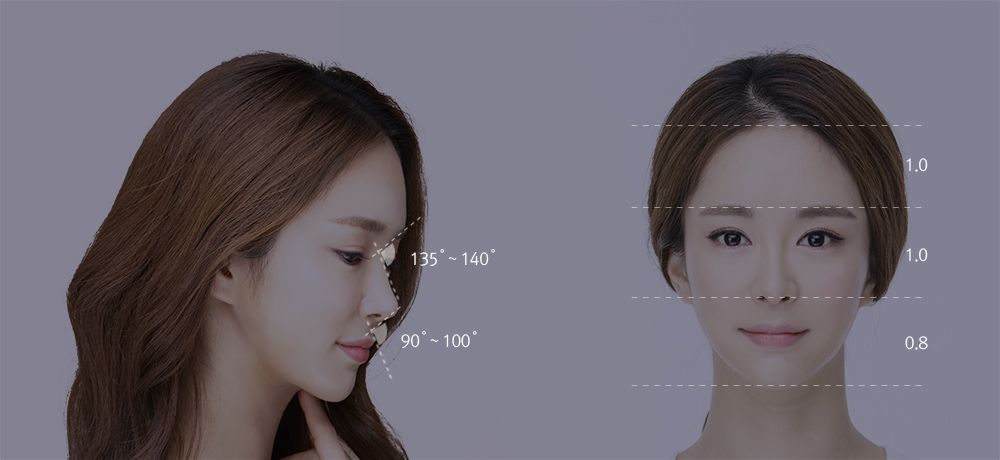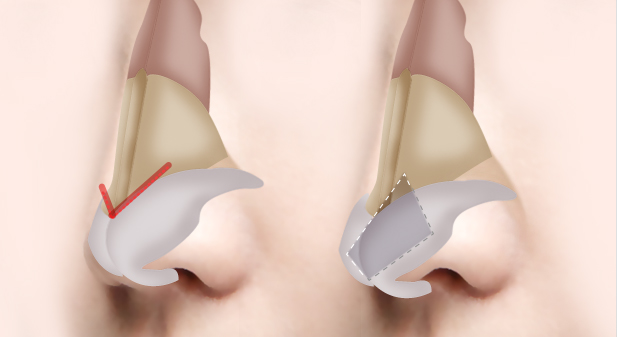A short nose is a nose that is proportionally too short and over-rotated. Short nose correction is one of the most challenging rhinoplasty surgeries.
The body has certain original characteristics, and most Asian noses which require short nose correction have comparatively thicker skin, excess soft tissues, and weaker cartilage structure. Additionally, short nose correction is accomplished with radix grafting, which makes short nose correction much more complex.
For short nose correction, not only lengthening the nose but also long-term maintenance of the new condition after surgery is important. Therefore, short nose correction should be performed by a rhinoplasty specialized surgery with extensive experience.
Surgery Duration
Approx. 60-90 min
Hospitalization
No
Stitches Removal
After 7 Days
Anesthesia
Local and Sedation
Recovery Period
7 Days
Recommended When

- The tip is over-rotated (upturned tip).
- The length is okay, but the nostrils are visible.
- The nose is short compared to the proportions of the face.
- The previous rhinoplasty has caused nose contracture.
The ideal nose characteristics

Slightly curved and upward tip, not showing the nostrils too much, giving a feminine and sophisticated expression.

The ideal male nose and the ideal female nose are quite different. CDU is always careful to evaluate the ideal length and angle, considering gender and overall facial shape. An ideal female nasal tip has a slight upward rotation overall.
Generally, when it comes to the ideal nose, the length is ⅓ of the face and the degree of the columella-labial angle is 95-105. When the angle is less than 110 degrees, the nose appears masculine and long.
Surgery Methods

1. When the length is short, but nostrils are not visible
When the bridge is flat, the nose seems short. In this case, the nose can look longer by heightening the bridge and the tip.
2. When the length is short and the nostrils are visible
When the hump is removed or reduced, if the surgical area is wide, the dorsum can feel unnatural to the touch. Furthermore, the shape can appear flared and the margin too angled. The section of the nose where the hump is removed should be treated.
a. Rearranging the alar cartilage
When the nose is short because the alar cartilage is located in an upward position, the alar cartilage is separated from the lateral nasal cartilage. The alar cartilage is then rearranged and fixed in a downward position downwards.

b. Septal extension graft
When method A is not enough to lengthen the tip, the rearranged cartilage position is fixed strongly by grafting the cartilage. (Generally, septal cartilage is used).

3. When the length is okay, but the nostrils are visible
a. Elevating the alar base
When the level of the alar base is lower than the columella, a surgical thread is inserted through minute holes. The alar base can be lifted by tightening the thread.

b. Lowering the alar rim
When the alar rim is retracted, the nose can look short due to visible nostrils. The alar rim can be lower by filling the retracted alar rim area.

4. When the nose becomes upturned and short after rhinoplasty
If the nose becomes upturned and short, we can consider the nose to have a deformity due to scar tissue contraction or capsular formation after rhinoplasty. Alternatively, if an L-shaped implant is used during the prior rhinoplasty, over time, the alar cartilage can push up the implant and the tip can become upturned.
In these cases, through sufficient consultation with the surgeon, the condition is accurately analyzed and revision rhinoplasty should be performed.
Q&A About Short Nose

Yes, it is possible. By injecting filler on the tip and bridge, subtle improvement is possible. However, if patients are looking for a long-lasting result and more definite change, invasive surgery is required.

